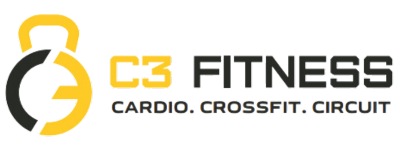By admin
- January 10, 2024
- Squat Workout
- 473 Views
Introduction
Fitness enthusiasts who set out to develop a strong and well-defined physique frequently end up at the foundation of strength training: the squat. C3 Fitness Workouts that target multiple muscle groups, increase overall strength, and improve functional fitness are all made possible by squats, which are not only a fundamental exercise but also incredibly effective. We’ll go deep into the realm of squat exercises in this blog post, covering their advantages, appropriate form, variations, and integration into your fitness regimen.

Benefits of Squat Workouts
1. Full-Body Activation
Multiple muscle groups, including the quadriceps, hamstrings, and are worked simultaneously during squats. This full-body activation improves overall functional strength and fosters the growth of new muscles.
Increased Strength and Power
Frequent squat training helps build lower body strength, which enhances your capacity for power production. This strength can help with a variety of tasks, from everyday chores to sports performance. Fitness The quest for greater strength and power assumes central role in the pursuit of a robust and powerful physique. Building strength and power has indisputable advantages for anyone looking to improve their overall fitness level or for athletes looking to improve their performance.
Boosted Metabolism
Workouts involving the squat are strenuous and energy-intensive. Frequent squat exercises will increase your metabolism and help you lose fat and manage your weight. Increasing one’s metabolism is frequently regarded as a crucial step in the pursuit of a healthier lifestyle.

Improved Mobility and Flexibility
Squats’ dynamic style encourages more joint flexibility and mobility, especially in the hips, knees, and ankles. People who lead sedentary lifestyles may find this to be especially advantageous.

Mastering Squat Techniques
1.Proper Form
Sustaining good form is essential to minimizing injuries and optimizing squat performance. C3 Fitness As you lower yourself into the squat, make sure your knees are in line with your toes, and your feet are shoulder-width apart.
Depth Matters
Aim for a depth where your thighs are parallel to the floor in order to completely engage the targeted muscle groups. Going too far could reduce the workout’s advantages. One of the most important things that frequently distinguishes a novice lifter from an experienced one when it comes to squat technique is the depth of the squat.
Conclusion
Exercises involving the squat form the cornerstone of any comprehensive program for strength training. Squats are a great exercise to include in your routine if you’re a beginner or an experienced athlete looking to improve your fitness. Accept the challenge, concentrate on form, and observe as your physique, strength, and power soar to new heights. Remember, a squat is the first step towards developing a powerful physique.


